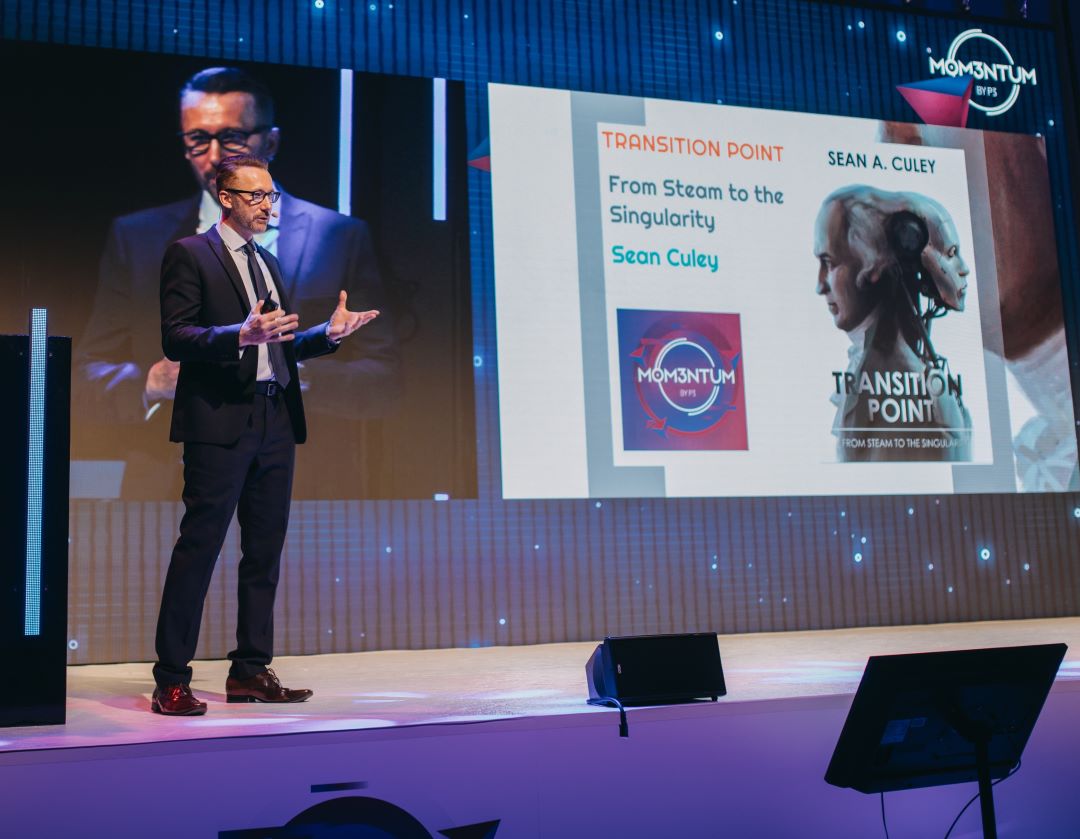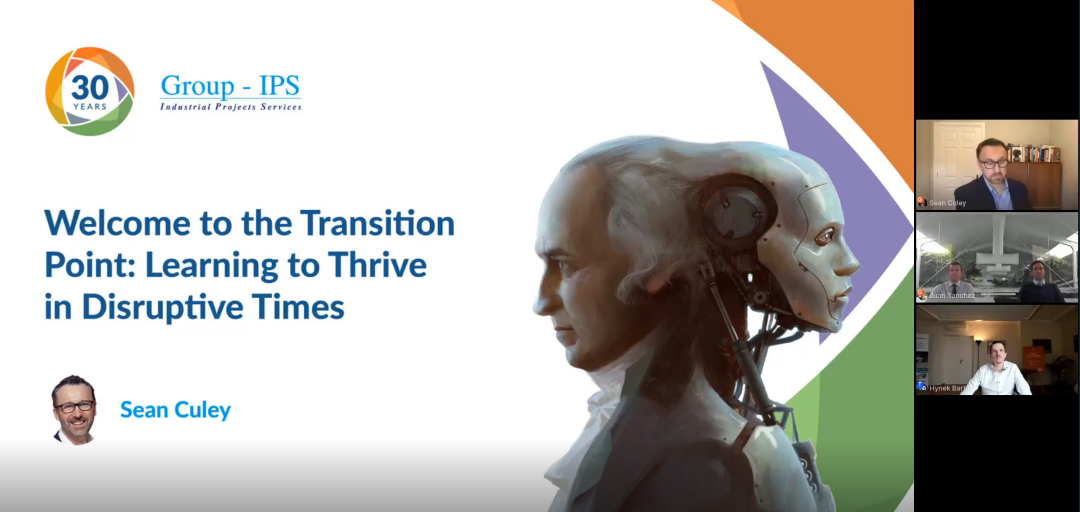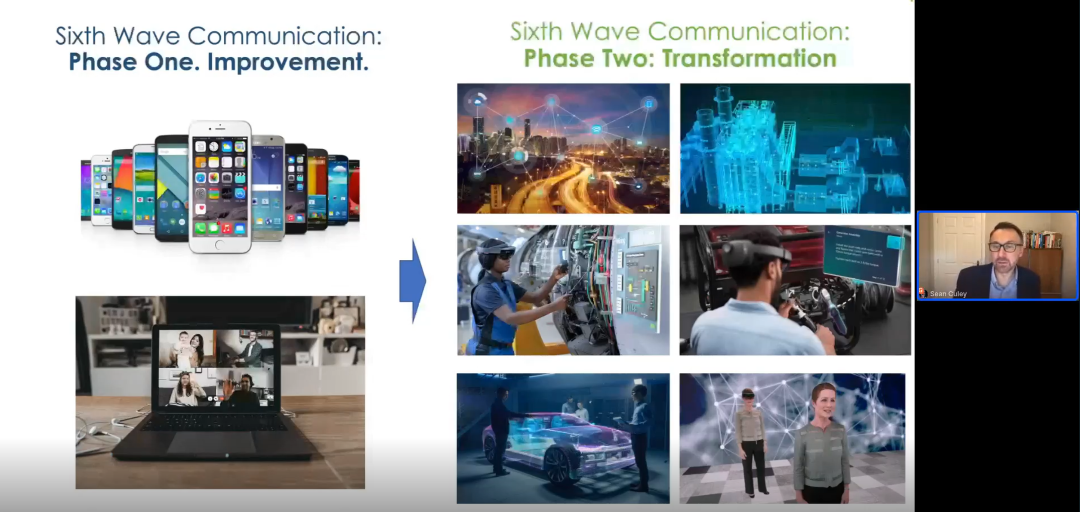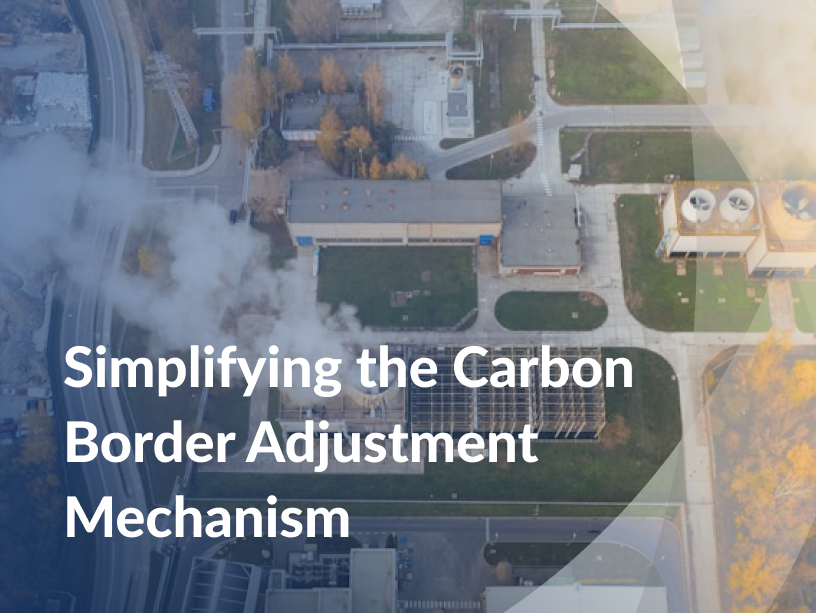
Become ‘Anti-Fragile’ To Go Beyond Resilience or Robustness and Truly Transform Your Business
We are currently living in an age of fragility, in terms of climate, finances, democracy, peace. In his webinar, Sean Culey discussed how companies and customers can become ‘anti-fragile’ to ensure they are part of this wave’s creation and not part of its destruction.
Sean Culey, a renowned speaker on the topic of disruptive technologies and their impact on business, the economy and society, likes to use the tagline: “disruptive thinking for disruptive times.” And boy, do we live in disruptive times.
As keynote speaker in the first of a series of webinars to celebrate Group-IPS’s 30-year anniversary, Culey sought to explain why the world is so disruptive right now; why these waves of “creative destruction” – effectively a period of new technological innovation that creates new markets but destroys existing ones – seem to be getting more frequent, more impactful, and have a more rapid diffusion and a greater scope to them; and what businesses can do to future-proof themselves and take advantage of the new opportunities.

So where does the world find itself today? Culey explained in the webinar, Welcome to the Transition Point: Learning to Thrive in Disruptive Times, that there had been five previous “waves of creative destruction” ending with the Computer Age in the years up to the 2008 financial crisis. We are now in the middle of the upswing of the Sixth Wave (the Digital/AI Age) – and this “Transition Point” between two phases of the creative destruction wave is a time of great progress, but also great disruption and danger.
There’s a whole host of trends, many unfavorable, that will define the Sixth Wave’s transition period: stagflation; rising interest rates; widening income inequality; climate change impacts; and rising conflict.
“We are, unfortunately, living through a time of great fragility, whether it’s our personal finances, our supply chains, our energy and food supplies, our economies, our peace, our democracies, and our ecosystem,” he said. “It’s not looking particularly good right now.”
And if you think things are disruptive now, you haven’t seen anything yet. “I refer to Amara’s Law,” he says, “which states that we tend to overestimate the impact of technology in the short term, but underestimate in the long term. Right now, we’re at this midpoint.”


Once the midpoint is passed, the speed of change can be breathtaking. By way of example, Culey cited the automobile, which took 25 years to reach 100 million users; the internet, which took 15 years to reach that number; Facebook, which took four years; and ChatGPT, which took just six weeks.
Essentially, we are at the end of the beginning, not the beginning of the end, which means the future looks nothing like the past, and things will never again be as slow as they are right now.
“Things are going to speed up and they’re going to keep speeding up, and that’s going to create a gap between the rate of progress in technology, and a gap between the rate of progress that people and organizations can adapt to. Unfortunately, most organizations are fragile,” he said.
Becoming ‘anti-fragile’
By “fragile”, Culey means those companies that are unable or unwilling to adapt to the changing environment, meaning they will end up as part of the wave’s destruction, not its creation. “They have functional and industrial age mindsets, methods and management styles, which is leaving them exposed in the face of this oncoming wave of disruptive change.”
So how do companies become “anti-fragile”?
It won’t be easy, not least because most leaders are struggling to control their businesses in a world of exponential rate of change and an operating environment that is chaotic and ever-changing – a world that no longer aligns to what they were taught, which was operating with a short-term, cost-focused mindset and a focus on quarterly expectations: “Most importantly, they’re playing not to lose, rather than playing to win.”
- Digital disappointment: Companies are spending heavily on their digital transformation, but 9 out of 10 digital transformation projects will fail. A report by Gartner found that while 60+% of companies surveyed have plans to invest in Intelligent Automation, the same number, 60+% said they are not “organizationally prepared” for its adoption. “Most companies have one of two approaches to digital transformation, which either replicate existing processes by digitizing them, or they copy/imitate and do what everyone else has been doing – neither of which is particularly strategic or well thought-through,” Culey said.
- Too much data badly used: The huge volumes of data now being produced are not making decision-making any easier. On the contrary, they are making it more difficult, with a 2021 survey by Signal showing that 80% of 1,000 C-suite leaders feel they have too much data to consider when making decisions. And when data is actually introduced to decision-making, it is used like a drunk uses a lamp post, which is more for support than illumination: “We use data to reinforce decisions that we have already made, or a point of view that we already hold.”
- True transformation: The answer lies in companies actually transforming the ways that their businesses operate rather than merely digitizing existing processes. In essence, it is about transforming the mindset, culture and strategy of the organization, because the problem with transformation is never a lack of ideas but a lack of change in behavior. “That’s why new startups win, because they are not weighed down culturally by existing organizational structures, or existing IT investments or legacy thinking,” he said. “They’re also not expected to have an immediate return on their investment, unlike most major corporations which demand an ROI almost immediately and that’s simply not the case in this ‘upswing’ period.”
- A journey, not a destination: By accepting that ‘Digital’ is a journey not a destination, Culey explained, it presents a perfect opportunity for a company to make a paradigm shift in its mindset, to redefine what it stands for, how it operates and what it rewards.
What does this look like in practice? To become “anti-fragile”, a company needs to go beyond resilience or robustness, since a resilient company withstands shocks but then returns to its original state. An anti-fragile company, on the other hand, will move to a new, better state.
“As we go through this massively disruptive period, fragile organizations are going to experience ‘post-traumatic stress’, but anti-fragile ones will have ‘post-traumatic growth’: fragile companies will struggle, resilient companies will survive, but anti-fragile companies will thrive,” Culey said, adding that the latter will be competing on business models and delivering external value.
This can be seen in the varying approaches to ESG reporting. The fragile company will do the reporting and try to introduce some recycling; the anti-fragile company will look at it as a new business opportunity and seek to identify ways to use sustainability to create new value propositions and business models.
And the best way to do this is to return to first principles. “The prime opportunity of this age is in helping companies to simplify their processes, procedures, and products behind the delivery of desired customer outcomes. AI shouldn’t be used to improve or automate bad processes, but to create better, simpler ones,” he said.
To conclude, Culey offered three pieces of advice to succeed in this age where things will never again be as slow as they are right now:
Don’t focus on surviving, focus on thriving – become ‘antifragile’.
Be part of this wave’s creation, not its destruction.
The best way to predict the future is to create it.
| Watch webinar On-demand → | Discover more webinars →
|
This article was written by:
![]()
Nicholas Watson
Editor with the Balkan Investigative Reporting Network (BIRN)
An award-winning journalist, Nicholas has worked for almost 30 years in Asia, the US and Europe, writing for publications such as the Financial Times, Politico Europe, TheStreet.com, Axios, International Herald Tribune TV and Knight-Ridder News. He was also co-founder and managing editor of Business New Europe.




